INSIDE: We would all love for our toddlers to embrace fruit as a regular part of their diet as it is so easy to prepare, tends to be in our kitchens anyway, and is an excellent source of hydration, vitamins, and fibre for our little ones. This is your questions answered about fruit for toddlers so you can feel confident implementing fruit into your toddler’s diet.
Yesterday morning, I was in the usual chaos of making school lunches for my youngest kids. My little girl was overseeing me making her lunch and claiming she now ‘only eats’ apples for lunch. Even though at home, she’ll happily down a punnet of strawberries in one sitting. Meanwhile, her older brother complained that our mandarins were too dry.
As a dietitian who works with children of all ages and a mum of four, I’ve seen it all when it comes to kids and their relationship with fruit.
Toddlers, in particular, are fickle regarding fruits (and all other foods!). Some days, they’ll gobble up every berry in sight; others will have no interest whatsoever. But here’s the good thing – fruit is full of nutrients, easy to prepare, and you can consistently offer it to your toddler (whether they eat it or not is up to them!).
Join me as we dive into the colourful, sometimes unpredictable world of fruits for toddlers.
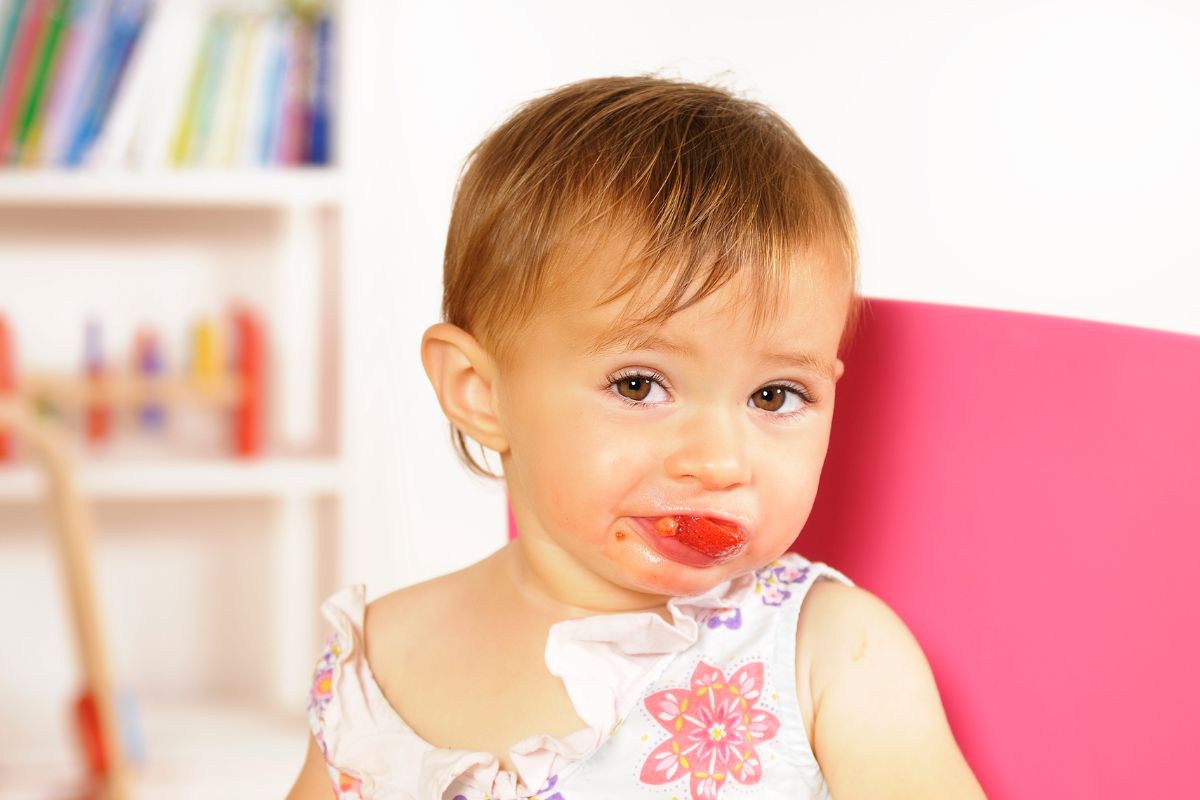
Toddlers can have a love/hate relationship with fruit!
From a nutrition standpoint, why should I aim to include fruit in my toddler’s diet?
Fruits are an excellent source of vitamins and minerals, including vitamins A and C, which will help support your toddler’s immune system.
They are also a great source of potassium, folate, vitamin E, and vitamin K.
Pairing a vitamin C-rich food (fruit) with food containing not-so-easily absorbable iron (or non-haem iron) will improve the body’s absorption of iron from those foods.
Foods containing non-haem iron include fortified cereals like Ready Brek and Weetabix, spinach, wholegrain bread and dried fruit.
So, serving your toddler a piece of fruit with their Ready Brek in the morning will increase the amount of iron they get from their breakfast. Iron is essential for supporting your toddler’s immune system, growth and development, and prevention of anaemia.
Fruit is also a great source of fibre and is the number one contributor of dietary fibre to toddlers aged 1-3 years in Ireland. Fibre will bulk up your toddler’s stool, help prevent constipation, and support good gut health.
Learn More: 6 Easy Toddler Breakfast Ideas for when you’re short of inspiration.
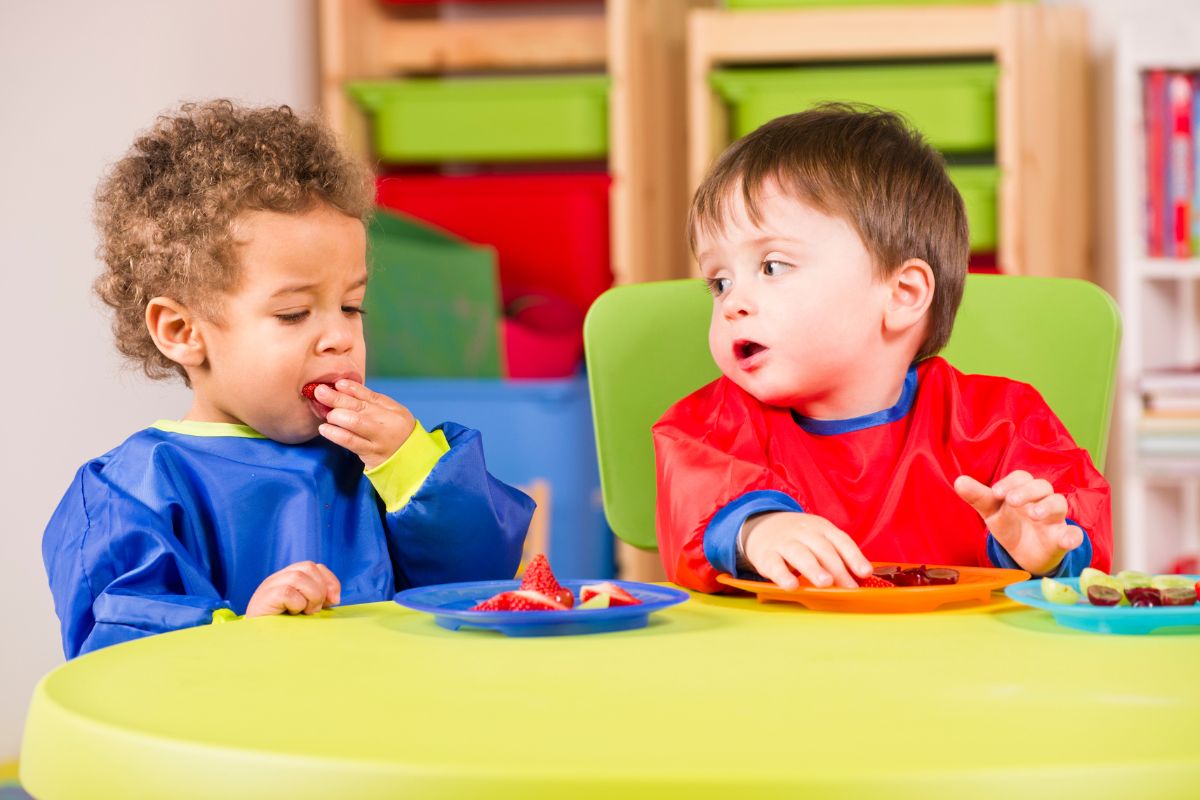
Fruits are super easy to include as part of your toddler’s snacks.
Is there too much sugar in fruit?
Parents often worry about fruit’s sugar content, which can put them off giving fruit to their toddlers. After all, fruits are “nature’s candy,” so should we encourage our toddlers to eat more?
First, we must differentiate between free sugars and sugar within a food’s matrix.
Free Sugars
Free sugars are any sugar added to a food or drink. They also naturally occur in fruit and vegetable juices, purees, and pastes, where the structure of the food has been broken down, releasing the sugar.
This kind of sugar is recommended to be minimised in baby and toddler diets as much as possible.
Consuming too much of this sugar can cause a preference for sweeter tastes later in life, putting your toddler at greater risk of dental caries.
Sugar within a food matrix
This is sugar encased within a food structure with many other nutrients, such as vitamins, minerals, and fibre.
This is the type of sugar found in whole fruits and vegetables, milk and yogurt.
We do not need to limit this kind of sugar in our toddlers’ diet.
The Bottom Line
We should offer our toddlers whole fruits instead of juices, purees or pouches as much as possible.
This will help minimise the amount of free sugar they consume while allowing them to enjoy all the benefits of having fruit in their diet.
Learn More: Sugar For Babies – Separating Fact From Fiction!
Can toddlers eat fruit every day?
Yes, I recommend offering it daily.
These are the current Food Safety Authority of Ireland (FSAI) guidelines for how much fruit & veg. Your toddler should have in a day:
Ages 1 to 2: 2 to 3 servings a day
Ages 3 to 4: 4 to 5 servings a day
Here are some examples of portion sizes
- 1 plum
- 1 kiwi
- 1 mandarin
- 100ml unsweetened orange juice
- half orange
- half apple (with skin removed)
- half pear (with skin removed)
- half banana
- 3 to 4 cooked carrot sticks
- 3 to 4 cucumber sticks
- 5 to 6 berries cut in halves or quarters
- 5 to 6 grapes cut in quarters
- 3 to 4 cherry tomatoes cut in quarters
- half cup (30g to 40g) tinned fruit in natural juice
- half cup (30g to 40g) cooked, fresh or frozen vegetables
- 100ml vegetable soup
A portion of fruit or vegetables for toddlers is 40g, half the portion size for adults.
Are fruit and veg the same?
Fruit and vegetables are in the same food group and on the same Food Pyramid shelf.
Although toddlers may find vegetables more difficult to like, they are the same regarding nutritional quality!
What fruit is the best for toddlers?
Some fruits, like blueberries, have excellent marketing teams behind them.
Blueberries have been put on a pedestal as a “superfood” because of their antioxidant content, even though all fruits contain antioxidants!
We know that one food or fruit will not make or break your health; your overall diet is essential. And it’s the same for your toddler!
The best fruit for your toddler is easy to prepare, readily available in your kitchen, and that your toddler will eat.
We should encourage our toddlers to try new fruits, but it’s also good to have fruits on hand that we know our toddlers will happily eat.
It is good nutritionally to aim to include a variety of fruits in your toddler’s diet, but if your little one only eats bananas, that’s perfectly okay and normal.
Is there a super fruit? No, all fruits are nutrient-dense and are a good choice for your toddler.
Is fruit a good snack for toddlers?
Fruit is an excellent snack for toddlers because:
- It is easy to prepare, travels well and is usually in your kitchen.
- It is an excellent source of nutrition and hydration for your toddler.
- They have likely been eating fruit since they were babies, so they are used to the flavour and texture of familiar fruits and are, therefore, more likely to eat them.
- There are many options, meaning if your toddler doesn’t like one fruit, you can try another.
TIP! Fruit on its own isn’t a filling snack. Try combining it with other foods to make a more satisfying snack. You’ll find some options here.
100% fruit juice can be a handy way to boost vitamin C in toddlers who won’t eat fruit or veg.
Feeding your Toddler Online Course
8 Steps to Enjoyable and Successful Mealtimes. This self-paced online course gives you practical, expert and proven strategies to help you raise a happy, competent eater and stay sane while you do it!
Should I give my toddler fruit juice?
Current FSAI guidelines say that fruit juices given to toddlers are diluted with water as they are high in free sugar.
When choosing a juice for your toddler, ensure it is 100% fruit juice with no added sugar or sweeteners.
Most juices on the market in Ireland today are 100% fruit juice.
A portion of fruit juice for toddlers is 100ml, which isn’t a lot!
Serve fruit juice with a meal rather than as a standalone drink to minimise their teeth.
Fruit juice can be beneficial but can increase your toddler’s vitamin C intake, mainly if they refuse to eat fruit and vegetables. Serving vitamin C-rich fruit juice with an iron-fortified cereal such as Ready Brek or Weetabix will increase the amount of iron your toddler will absorb, helping ensure they get enough iron.
If your toddler is eating fruit, fruit juice is unnecessary. However, fruit juice can be helpful for toddlers who don’t like to eat whole fruits and vegetables.
Should I give my toddler frozen fruit?
Frozen fruit is just as nutritious as fresh fruit.
Fruits have the highest nutrient content straight after they have been picked.
Fruit is frozen right after being picked, so its nutritional value is very similar to fresh fruit.
!Caution!
The FSAI recommends boiling imported frozen fruit for 1 minute before consuming due to repeated outbreaks of hepatitis A & norovirus in frozen berries.
Boiling the fruit for one minute will kill any viruses present, so there is nothing to worry about once this is done.
How to add frozen fruit to your toddler’s diet –
- Use in a smoothie.
- Add to porridge or ReadyBrek.
- Try my Easy Chia Seed Jam.
- Bake a fruit crumble.
Should I give my toddler dried fruit?
I’m asked all the time about whether or not we should be giving dried fruit to toddlers.
There’s so much conflicting advice about this, but let’s discuss it.
NHS guidelines recommend giving toddlers dried fruit like raisins and sultanas with meals rather than as a snack in between meals.
This is because of the high sugar content of dried fruit, which could contribute to tooth decay.
It’s good to know that dried fruit generally contains all the vitamins and minerals the original fresh fruit provides except for vitamin C.
Dried fruit is also a source of non-haem iron, while fresh fruits are not.
Learn More: Baby meal ideas you can make from your cupboard

Don’t just serve fruits you KNOW your toddler likes
List of fruits for toddlers and how you can prepare them:
| Fruit | Preparation & Serving |
| Banana |
|
| Blueberries and raspberries |
|
| Apple |
|
| Pear |
|
| Orange |
|
| Peach & Nectarine |
|
| Mango |
|
| Kiwi |
|
| Grapes |
|
| Watermelon |
|
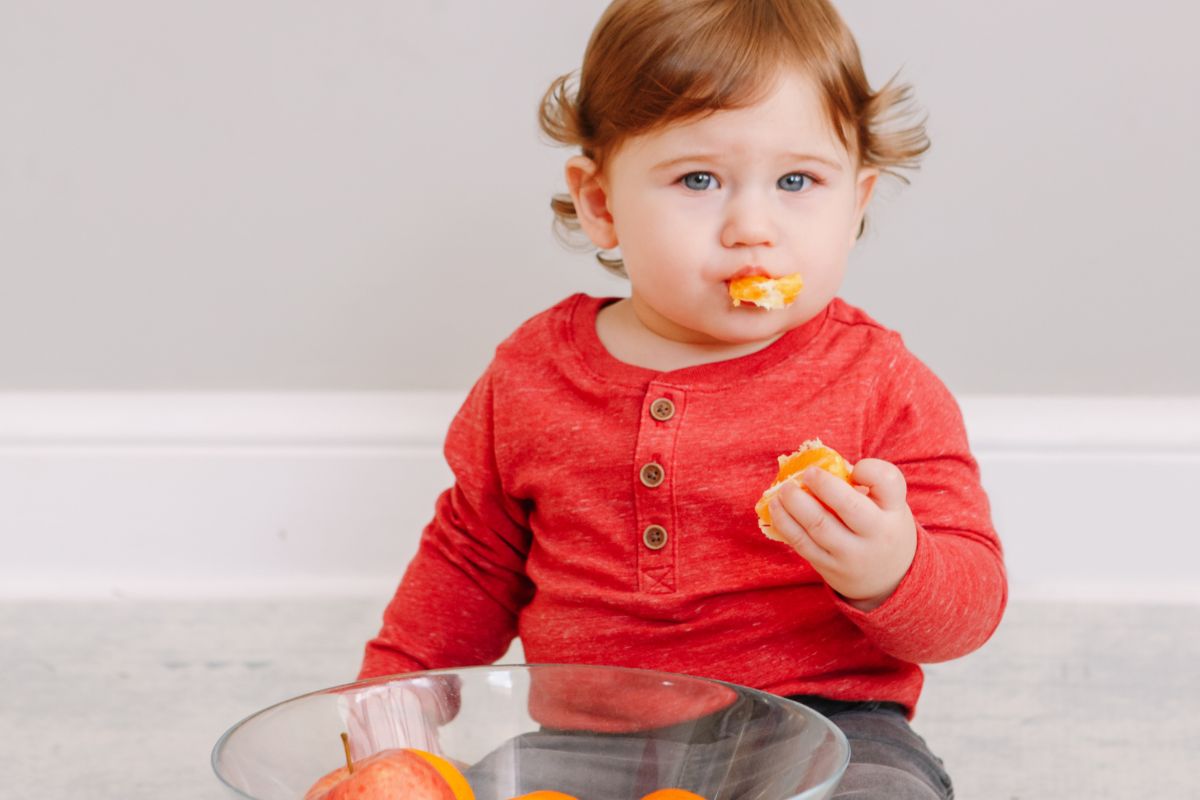
Not every toddler likes fruit
How can I get my toddler to eat more fruit?:
- If your toddler doesn’t like fruit, keep offering it to them. Offer it with foods that you already know they will eat. One day, they might surprise you and eat the fruit as well!
- Don’t pressure them to eat the fruit. Just offer it as part of their meal or snack.
- Involve your toddler in the prep of the fruit if they’re old enough, i.e. can they help peel the banana or the orange?
- If your toddler doesn’t like a fruit one way (e.g., raw apple), try serving it another way (e.g., apple sauce).
- You can make the fruit more fun and appealing by cutting it into fun shapes with cookie cutters, creating a fruit kebab, or serving it with colourful sprinkles in yoghurt.
- Enjoy fruit with your toddler and eat it as a family, offering it during family meals.
Learn More: 7 Secrets to understanding why your 2-year-old isn’t eating well.
How do I serve fruit safely to my toddler?
There are strategies that we can implement to reduce the risk of choking in toddlers, which is an understandable concern among parents:
- Firstly, ensure the fruit is cut into small manageable pieces. Here are some examples –
| Grapes and cherry tomatoes | Cut into quarters or smaller |
| Apples and pears | Peel and slice thinly or grated or whole (>18 months) |
| Larger berries | Can halve or quarter them |
| Orange | Can remove the membrane |
- Secondly, supervise your toddler while eating and encourage them to eat while sitting down rather than walking or running around with food in their mouths.
- Encourage your toddler to chew their food thoroughly before swallowing and model this for them so they can see how to eat safely.
- It’s good to know basic first aid just in case a choking incident occurs so you know what to do. Check out parentfirstaid.i.e., St. John Ambulance, to see their first aid training courses.
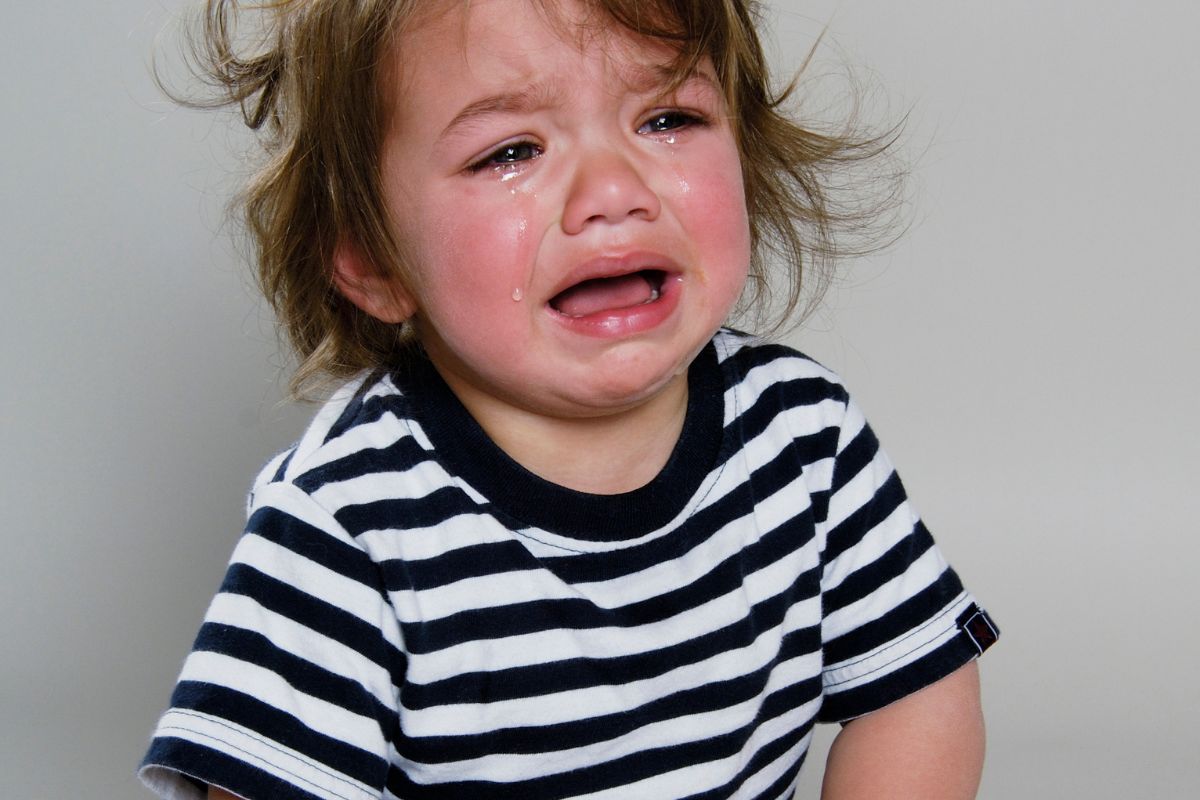
Constipation is a common problem for toddlers
Best fruits for toddler constipation:
It is important to note that chronic constipation cannot be managed by diet alone, and it is essential to seek medical advice if constipation is an ongoing problem for your toddler.
That said, fruit can help treat and prevent constipation:
- Fruits contain fibre and water, which could help prevent and treat constipation.
- Apples and pears also contain sorbitol, a natural sugar alcohol that can work as a laxative and help your toddler go. Prunes also contain sorbitol, but they don’t tend to be toddler favourites!
- Aim to meet the daily portions of fruit and veg. Recommended by the FSAI, which I discussed above.
- ANY fruit—whatever your toddler will eat—will help with constipation, so there is no need to be overly worried about which type of fruit is better than others.
YOU MIGHT LIKE: Worried about constipation and weaning? 6 easy ways to keep things moving!
So the next time your toddler turns up their nose at fruit like mine did so often, don’t panic! Keep offering fruit again and again along with the rest of their food; one day, they might just surprise you!
Feeding your Toddler Online Course
8 Steps to Enjoyable and Successful Mealtimes. This self-paced online course gives you practical, expert and proven strategies to help you raise a happy, competent eater and stay sane while you do it!
How to Read Nutrition Labels (Without Losing Your Mind in the Aisle!)
INSIDE: Wondering how to read nutrition labels without getting overwhelmed? This guide breaks down food packaging, explains hidden sugars, fats, and ultra-processed foods, and helps you make confident choices for your family—without spending hours in the...
Tiny Tummies, Big Growth: A Dietitian Mum’s Guide to Protein for Toddlers
INSIDE: Protein is the nutrient of the moment. And as toddlers can be challenging to feed, it’s not surprising if you have concerns and questions about protein for toddlers. This blog explores protein, how to get enough, and easy ways to include it in your toddler’s...
How to serve eggs to your baby-the easy how to guide
INSIDE: Get answers to questions like how many eggs a baby can eat in a week, when I can introduce my baby to eggs, and how to serve them.It's 5 p.m., and you've forgotten to defrost your carefully batch-cooked meal (again!). You rush to the cupboard. And, phew, you...
Feeding your Toddler Online Course
8 Steps to Enjoyable and Successful Mealtimes. This self-paced online course gives you practical, expert and proven strategies to help you raise a happy, competent eater and stay sane while you do it!

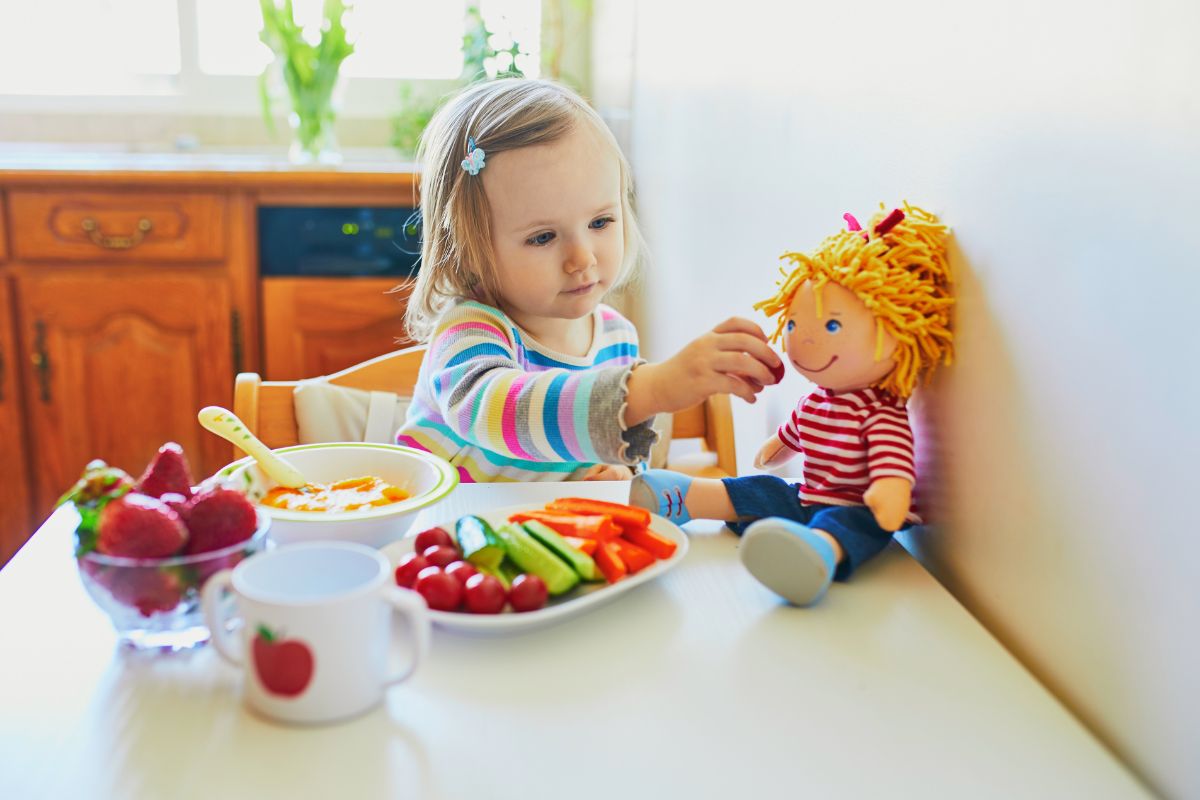



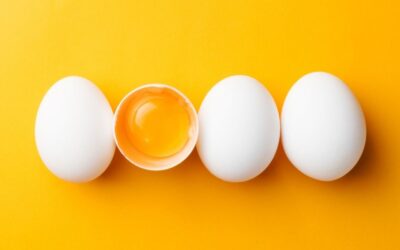

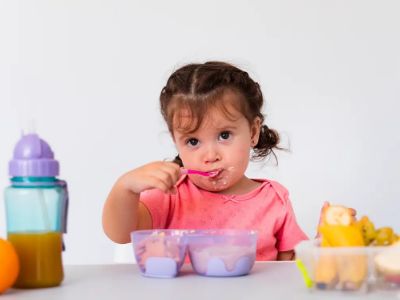
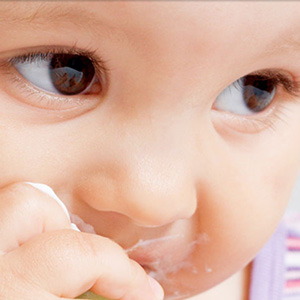

0 Comments